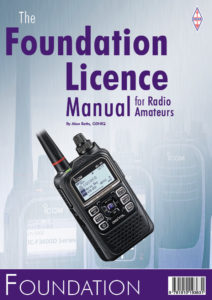“What is Amateur Radio?” is a commonly asked question. Many people when asking the question mention Citizens Band Radio (CB) and ask if it is the same.
CB is used in many countries, is a mobile radio system allowing short-distance person-to-person bidirectional voice communications. It uses various channels near 27 MHz (11 m) in the high frequency FM, AM & SSB modes. There are many differences between CB and Amateur Radio (sometimes called HAM Radio), CB equipment is limited by law to transmit at 5 watts, while Ham Radio equipment can legally transmit at power levels of up to 1.5kW dependant on the country of operation and the license held by the operator. … Ham Radio operators also have a much wider choice of frequency bands while CB is limited to only the 27 MHz band.

The first thing we need to consider is “What is radio ?”. Well Radio is the technology of signalling and communicating using radio waves. Radio waves are electromagnetic waves of frequency of between 30 hertz (Hz) and 300 gigahertz (GHz). It was In 1894 when Guglielmo Marconi began developing a wireless telegraph system using radio waves. But it was not Marconi that discovered radio waves, they were discovered in 1888 by Heinrich Hertz but were discounted as a communication format since they seemed, at the time, to be a short range phenomenon.
So having established what Radio is, how do HAM radio operators use radio? Amateur Radio is a popular hobby that brings people, electronics and communication together under one vast hobby. People use ham radio to talk across town, around the world, or even into space. This is mostly achieved with wireless radio signals although in todays modern hobby the Internet does play a major role in some modes of amateur communications. It’s a fun, social, educational hobby that can be a lifeline during times of need.

By becoming a radio amateur you enter an exciting world of communications. No licence is required in the UK to receive any of the signals, however to transmit signals which could speech, television or data, does require a licence. The license itself is free and issued by Ofcom, however it does require some training and an examination to gain the license to operate ham radio. In the UK there are three tiers of license, the foundation license is the first step into amateur radio and although it doesn’t require a great amount of technical knowledge it does require you to study and recall various rules, requirements and do’s and don’ts. Once obtained the license can be upgraded to an intermediate and then a full license which in both cases require a little more technical knowledge but reward the holder with increased power levels and opens up more possibilities within the hobby.
Another question often posed to radio amateurs is “is it hard to operate the radios?” Well as with many things in life, some radios are more complex than others but you will find that the amateur radio community is very helpful in assisting you in getting the knowledge you need to successfully operate your radio or as it is often called “rig”. Of course there are some radios that are very basic and easy to operate so no matter what your level of competence and requirements there will be a radio to suit you allowing you to communicate with both local stations and stations from all over the world and maybe even the international space station too! Once you have obtained your intermediate license you can even build radios of your own and operate them on air.
There is an old adage that your radio is only as good as your antenna and this is very true indeed. There is a huge range of antennas commercially available to purchase and use on your chosen band of operation, but again you can, and are encouraged, to build and experiment with your own antennas from foundation level.
Amateur radio is great fun and will introduce you to a lot of amazing and helpful people in the hobby however it isn’t all about fun! Even in the UK we are susceptible to emergency situations such as flooding etc and in mountainous regions maybe people lost in the mountains. Amateur radio operators can assist in these situations by providing reliable communications where normal modes of communications simple will not function. RAYNET is an organisation that was formed in 1953 following the severe East coast flooding, to provide a way of organising the valuable resource that Amateur Radio is able to provide to the community. Since then, it has grown into a very active organisation with around 2000 members, providing communication assistance on many hundreds of events each year.
Of course this article has only touched on the tip of the iceberg! Amateur radio is a vast hobby with many many avenues for you to explore. It is indeed your gateway to world wide communications and friendship.
